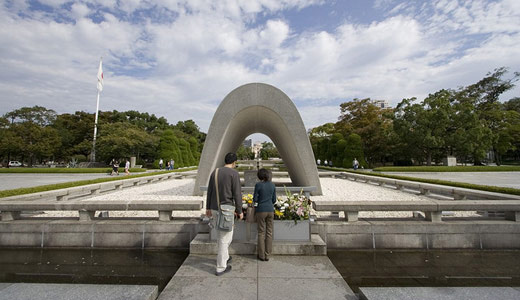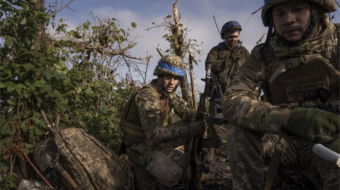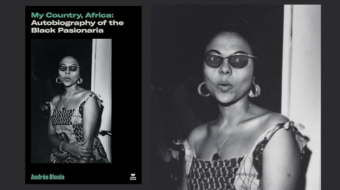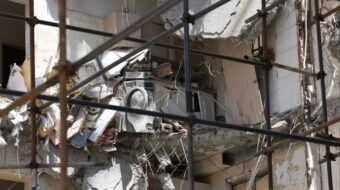
In Japan and around the world, tens of thousands are marking one of the worst atrocities in modern history: the bombing of Hiroshima and Nagasaki. They are vowing to never let it happen again.
Hiroshima was bombed Aug. 6, 1945, and Nagasaki was demolished two days later. Descriptions from hibakusha, those who survived the blasts and ensuing fallout, have given testimony to the horror of those days. These were the only time atomic weapons have been used against human populations
“When it struck, I was burned on my back with the heat ray of the fireball, as high as 3,000 to 4,000 degrees Celsius at its center, melting rocks and iron, and also with the invisible radiation,” Taniguchi Sumiteru said at a UN meeting in 2005, describing his experience. “The next moment I was blown off together with the bike about 4 meters and smashed to the ground by the blast. The blast had a velocity of 250 to 300 meters per second. It knocked down buildings and warped steel frames.”
In Hiroshima, a memorial service was held yesterday to mark the 67th anniversary of the bombing. There, representatives of the United Nations, as well as hibakusha, peace groups and others remembered the past and vowed to continue fighting until all nuclear weapons were destroyed.
A group of students from Fukushima, the site of the widely reported nuclear power plant disaster caused by an earthquake and tidal wave, attended the ceremonies, according to The Asahi Shimbun newspaper.
UN High Representative for Disarmament Affairs Angela Kane delivered a message from Secretary General Ban Ki-moon Aug. 6 in Hiroshima.
“On this day, in this city, let me proclaim again: there must never be another nuclear attack – never,” she said. “The elimination of such weapons is not just a visionary goal, but the most reliable way to prevent their future use.”
Ban, in his message, said that defense experts had concluded that nuclear weapons do not actually ensure a balance of power. Instead, he said, their very existence is destabilizing to the region and to the world.
Around the world, the fight against nuclear weapons is continuing.
On Aug. 1, 16 new cities joined Mayors for Peace, including Bogotá and Gainesville, Fla. The organization was formed in 1982 at the behest of Takeshi Araki, then mayor of Hiroshima. His proposal, according to the organization, “offered cities a way to transcend national borders and work together to press for nuclear abolition. Subsequently, the mayors of Hiroshima and Nagasaki called on mayors around the world to support this program.”
Earlier this year, the organization celebrated as the number of cities signed up surpassed 5,000.
Still speaking on behalf of Secretary General Ban, Kane announced that the UN was undertaking several initiatives to preserve the memories of the horrors of the atomic blasts and to strengthen the fight against nuclear weapons.
“Your message is being heard,” Ban’s message continued. “I am very pleased that the testimonies of many hibakusha are being translated into several languages. In support of these efforts, the United Nations has just launched a multimedia website of hibakusha telling their stories. It is very important that these words be heard and understood in all countries, especially by the younger generation.”
The UN disarmament official added, “The United Nations … has also sponsored international ‘Art for Peace’ and ‘Poetry for Peace’ contests, challenging young people everywhere to imagine a world free of nuclear weapons. In many ways, our collective future rests on their understanding and support for this goal.”
Kane, while in Hiroshima, met with the leaders of Japan’s political parties, Kazuo Shii, chair of the Japanese Communist Party.
Photo: Hiroshima Peace Memorial Park. karma police // CC 2.0










